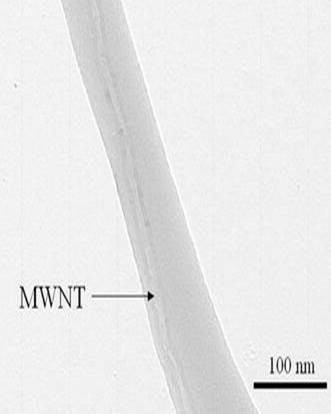▼ Reference
- Blond D, Walshe W, Young K, Blighe F M, Khan U, Almecija D, Carpenter L, McCauley K, Blau W J, Coleman J N. Strong, Tough, Electrospun Polymer-Nanotube Composite Membranes with Extremely Low Density. Adv. Funct. Mater. 2008; 18: 2618.
- Eren O, Ucar N, Onen A, Kizildag N, Vurur O F, Demirsoy N, Karacan I. Effect of Amine-Functionalized Carbon Nanotubes on the Properties of CNT-PAN Composite Nanofibers. International Scholarly and Scientific Research & Innovation 2014; 8: 759. http://waset.org/publications/9998966/effect-of-amine-functionalized-carbon-nanotubes-on-the-properties-of-cnt-pan-composite-nanofibers
- Jeong J S, Moon J S, Jeon S Y, Park J H, Alegaonkar P S, Yoo J B. Mechanical properties of electrospun PVA/MWNTs composite nanofibers. Thin Solid Films 2007; 515: 5136.
- Kang M, Chen P, Jin H J. Preparation of multiwalled carbon nanotubes incorporated silk fibroin nanofibers by electrospinning. Current Applied Physics 2009; 9: 595.
- Naebe M, Lin T, Tian W, Dai L, Wang X. Effects of MWNT nanofillers on structures and properties of PVA electrospun nanofibres. Nanotechnology 2007; 18: 225605.
- Saeed K, Park S Y, Haider S, Baek J B. In situ Polymerization of Multi-Walled Carbon Nanotube/Nylon-6 Nanocomposites and Their Electrospun Nanofibers. Nanoscale Research Letters 2008; 4: 39. Open Access Sen R, Zhao B, Perea D, Itkis M E, Hu H, Love J, Bekyarova E, Haddon R C. Preparation of Single-Walled Carbon Nanotube Reinforced Polystyrene and Polyurethane Nanofibers and Membranes by Electrospinning. Nano Letters 2004; 4: 459.
- Wong K K H, Zinke-Allmang M, Hutter J L, Hrapovic S, Luong J H T, Wan W. The effect of carbon nanotube aspect ratio and loading on the elastic modulus of electrospun poly(vinyl alcohol)-carbon nanotube hybrid fibers. Carbon 2009; 47: 2571.
- Yousefzadeh M, Amani-Tehran M, Latifi M, Ramakrishnan S. Morphology and Mechanical Properties of Polyacrylonitrile/Multi-Walled Carbon Nanotube (PAN/MWNTs) Nanocomposite Electrospun Nanofibers. Archives of SID, Transaction F: Nanotechnology 2010; 17: 60. Open Access
▼ Credit and Acknowledgement
Author
Wee-Eong TEO View profile
Email: weeeong@yahoo.com
 ElectrospinTech
ElectrospinTech

